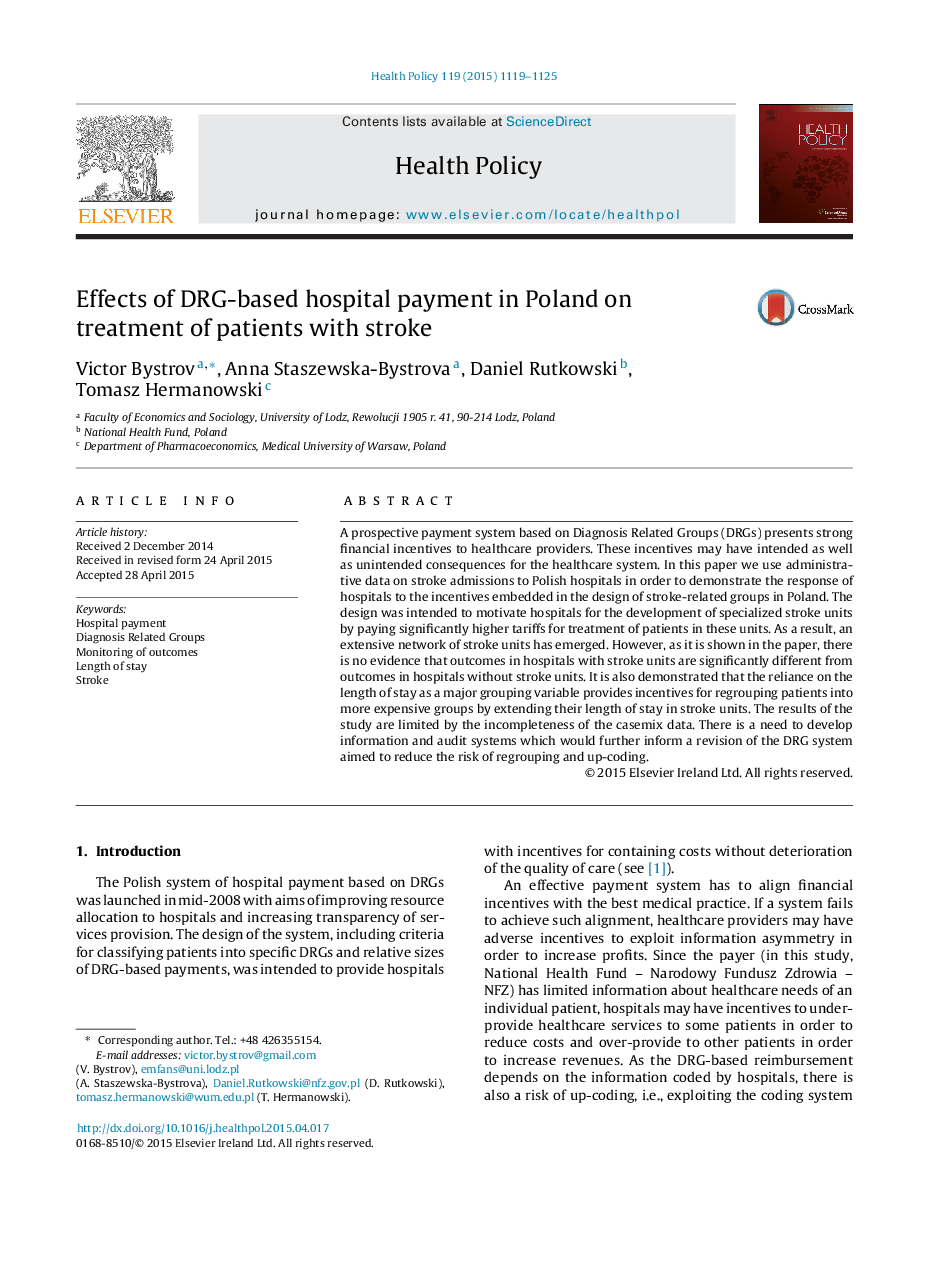| Article ID | Journal | Published Year | Pages | File Type |
|---|---|---|---|---|
| 6239412 | Health Policy | 2015 | 7 Pages |
â¢We analyze the effect of DRG-based payment on stroke treatment in Poland.â¢Hospitals with and without specialized stroke units are compared.â¢Performance of hospitals with and without stroke units is not significantly different.â¢Length of stay is influenced by financial incentives embedded in DRGs.â¢Monitoring of quality is restricted by incompleteness of casemix data.
A prospective payment system based on Diagnosis Related Groups (DRGs) presents strong financial incentives to healthcare providers. These incentives may have intended as well as unintended consequences for the healthcare system. In this paper we use administrative data on stroke admissions to Polish hospitals in order to demonstrate the response of hospitals to the incentives embedded in the design of stroke-related groups in Poland. The design was intended to motivate hospitals for the development of specialized stroke units by paying significantly higher tariffs for treatment of patients in these units. As a result, an extensive network of stroke units has emerged. However, as it is shown in the paper, there is no evidence that outcomes in hospitals with stroke units are significantly different from outcomes in hospitals without stroke units. It is also demonstrated that the reliance on the length of stay as a major grouping variable provides incentives for regrouping patients into more expensive groups by extending their length of stay in stroke units. The results of the study are limited by the incompleteness of the casemix data. There is a need to develop information and audit systems which would further inform a revision of the DRG system aimed to reduce the risk of regrouping and up-coding.
